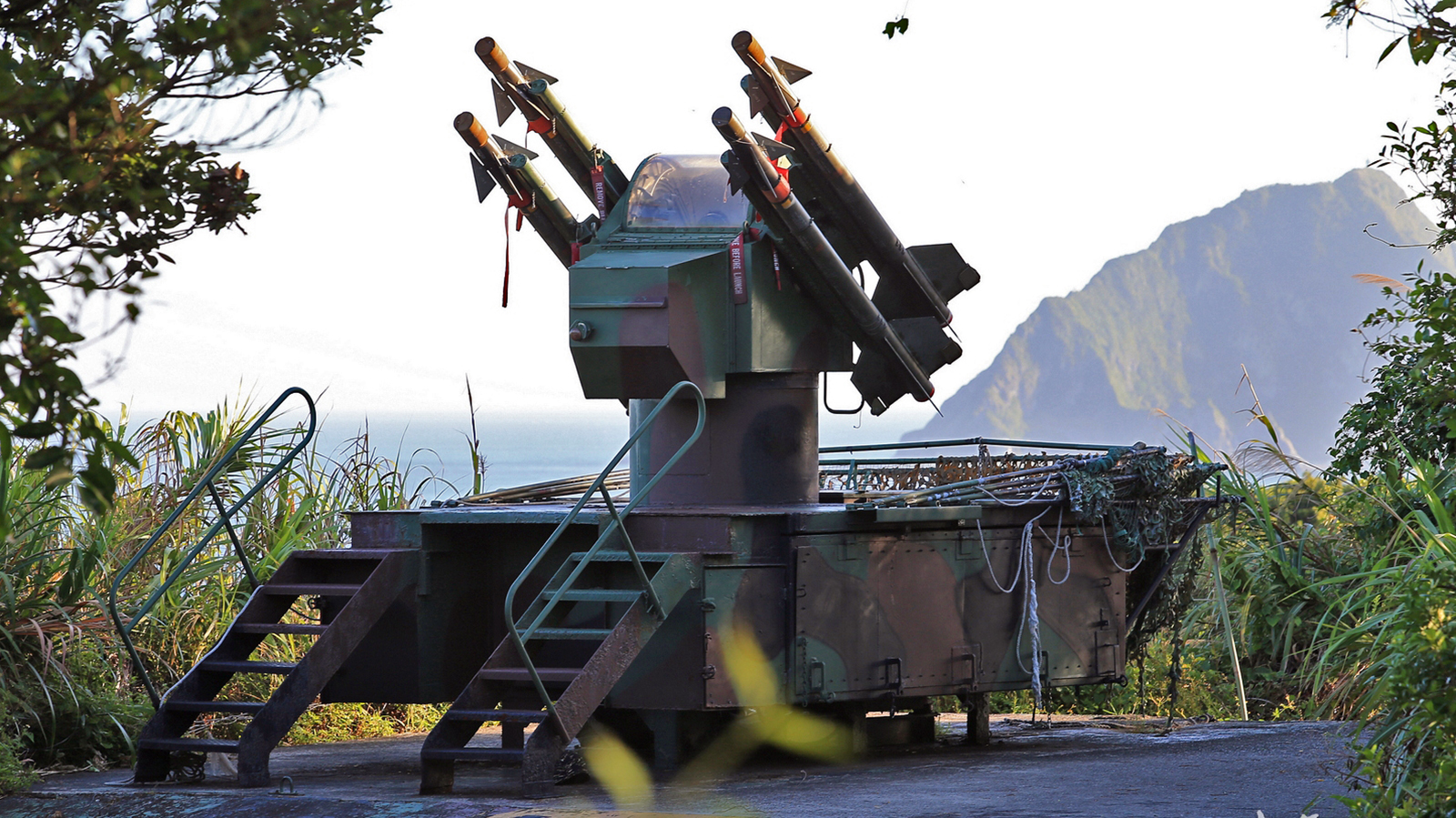More details have come to light about the shadowy FrankenSAM — a number of ground-based air defense systems rapidly developed by the United States for Ukraine and now proven in combat. Most intriguingly, U.S. lawmakers are proposing that the U.S. Air Force look at adopting the FrankenSAM — in one of its short-range iterations — for air base defense. The growing vulnerability of airfields is something that we have explored on several occasions and it’s a problem compounded by a general lack of short-range air defense systems, or SHORADS, something that the FrankenSAM program could help rapidly address. The FrankenSAMs could also plug other gaps in air defenses and connect with a greater integrated air defense network, as well as provide independent point defense for vulnerable infrastructure.
What is likely the most comprehensive publicly available outline of the FrankenSAM is provided in the Senate Armed Services Committee’s (SASC) markup of the fiscal 2025 defense policy bill, filed on July 8 and which details how lawmakers propose to spend around $25 billion on top of previous budget caps.

Operational Command East
First off, the document provides some more background on how the FrankenSAM was developed for Ukraine, to meet what was an urgent requirement for more robust ground-based air defense capabilities after Russia’s full-scale invasion, to deal with crewed aircraft, drones, and cruise missiles.
According to the document, the FrankenSAM emerged from a U.S. Air Force requirement of Fiscal Year 2023, which called for a mobile ground-based air defense solution “that could be rapidly and affordably developed and fielded for use in Ukraine.” The FrankenSAM resulted in the design of a family of systems — three of which are so far known. Broadly speaking, these each comprise a ground launch system (understood to be based, at least in some versions, on existing Soviet-era hardware) that integrates an existing supply of air-to-air missiles into an open-architecture fire control “backbone.”
The specific reference to air-to-air missiles is interesting since the ship-launched radar-guided RIM-7 Sea Sparrow is also known to be a part of at least one of the FrankenSAM iterations.
The first FrankenSAM system to be seen in detail in official imagery comprises a Soviet-era Buk (SA-11 Gadfly) mobile surface-to-air missile system apparently armed with RIM-7s. However, the similar AIM-7 Sparrow air-to-air missile has also been provided to Ukraine and is also understood to be employed in one or more FrankenSAM versions.
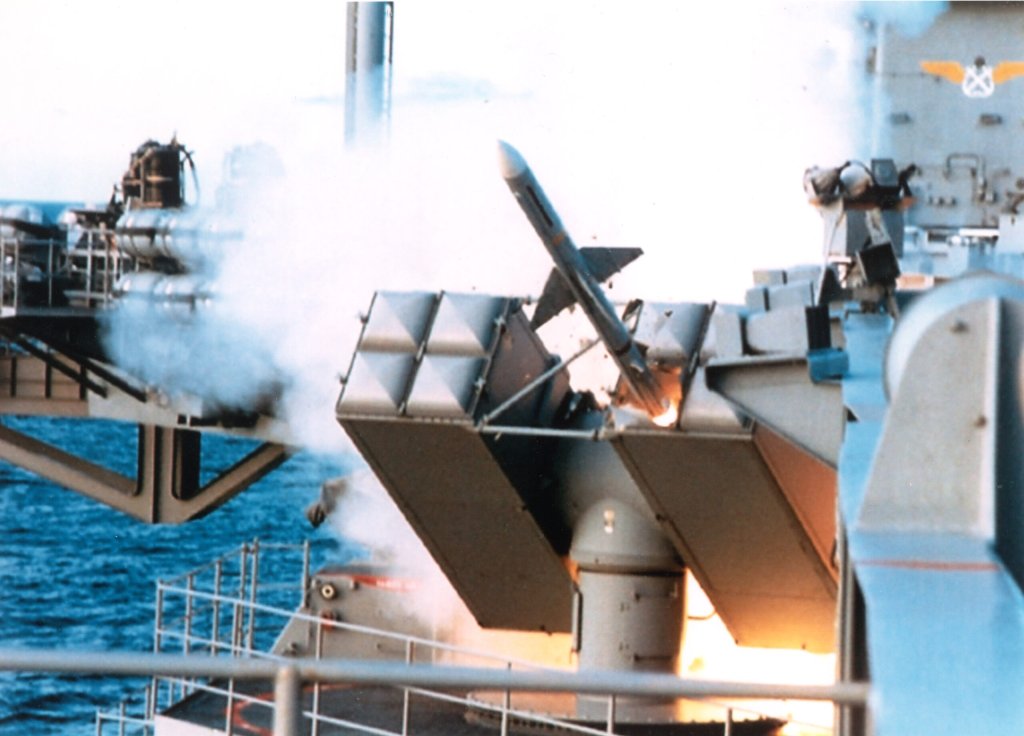
The second FrankenSAM that we know about is another ad-hoc system, but it uses repurposed U.S.-supplied heat-seeking AIM-9M Sidewinder air-to-air missiles as its effector.
Finally, there is understood to be a longer-range FrankenSAM system (not mentioned in the document) that combines U.S.-designed Patriot surface-to-air missiles and their launchers with elements from existing Ukrainian air defense systems, which might include radars from the country’s S-300P (SA-10 Grumble) systems.

FrankenSAM’s ability to leverage what are often surplus munitions is a huge draw as these weapons have diminishing relevance in their original roles and are plentiful in number. New missiles cost many hundreds of thousands or even millions of dollars each and can take years to procure. By their very nature they are a finite, not easily replenished resource at any given time.
As well as the various different mobile launchers and missiles, FrankenSAM also includes “communication towers; passive infrared camera systems; early warning radar trailers; and small-form-factor communication kits, enabling a networked air defense architecture.”
The entire open-architecture system was designed, built, and successfully completed live-fire testing within eight months from contract award, according to SASC, and was fielded by Ukraine by the end of 2023. The time taken to get the system into combat was equally impressive: “Within two months of arriving in theater, and with less than two weeks of operator training, FrankenSAM fully demonstrated its range of capabilities, providing an immediate impact on the battlefield,” the document states.
No details are provided about the Ukrainians’ experience of using the FrankenSAM in combat, but it’s clearly been successful enough for lawmakers to suggest that the U.S. Air Force looks at adapting it for its own use, specifically for air base defense.
“The committee recognizes that the standard budget and acquisition process of the Department of Defense (DOD) does not often allow for agile development and rapid procurement of innovative technological solutions designed to solve real-world challenges,” SASC contends. “However, today’s continually evolving threats require DOD to adapt and allow for creative and agile responses to emergent problems.”
In this sense, the FrankenSAM has become something of a case study for the ability of the U.S. Air Force and industry to rapidly and effectively develop systems for critical missions.
“The core of FrankenSAM leverages easy-to-use, proven technologies that limit the dependence on component development timelines, while emphasizing integration of existing and new equipment into an open-architecture system,” SASC highlights. “The modular approach of the system can be quickly integrated into existing air defense systems where gaps may occur in protecting installations, or by providing quick reaction, standalone point defense where a larger comprehensive air defense system may not exist.”
The video below is apparently the first evidence of a Ukrainian FrankenSAM having been destroyed in combat. Again, this is an example of the Buk/Sea Sparrow version, just one of several FrankenSAMs to have been developed:
Furthermore, the document notes that the FrankenSAM as developed for Ukraine is “currently utilizing a mobile, truck-mounted configuration, it could be adapted to use a palletized or fixed-base platform that can be easily integrated into various shore, ship, or land-based environments.”
Again, the reference to a truck-mounted configuration is interesting and suggests that the previously mentioned adaptation of the Buk to fire the RIM-7 and/or AIM-7 has, for some reason, been neglected from the description. As described, the truck-mounted FrankenSAM would appear to most likely be the iteration that’s armed with Sidewinder air-to-air missiles, the smallest of the known effectors. At this stage, we can’t say for sure. There remains the possibility that multiple other FrankenSAM systems are now being employed in Ukraine or have been developed.
Regardless, it’s obvious that the basic ability of the FrankenSAM system to host various different types of missiles (so-called “effector agnostic”) is seen as a major advantage. It is therefore able to be armed with surplus munitions that are already in either United States or partner inventories. Having a truck-mounted system would make sense for airfield defense, as well, since it’s not required to offer a high degree of off-road mobility and it should be fairly easy to transport by air, being flown into the bases where it’s needed. Once in theater, a truck-based system would also be able to move quickly to new locations, making its presence unpredictable and ensuring that it’s harder to target — a notably important factor when faced with long-rang drone attacks and cruise missile attacks.
Versions of FranenSAM systems could also be installed as platforms in semi-permanent locations or even at sea aboard support vessels and sea bases.
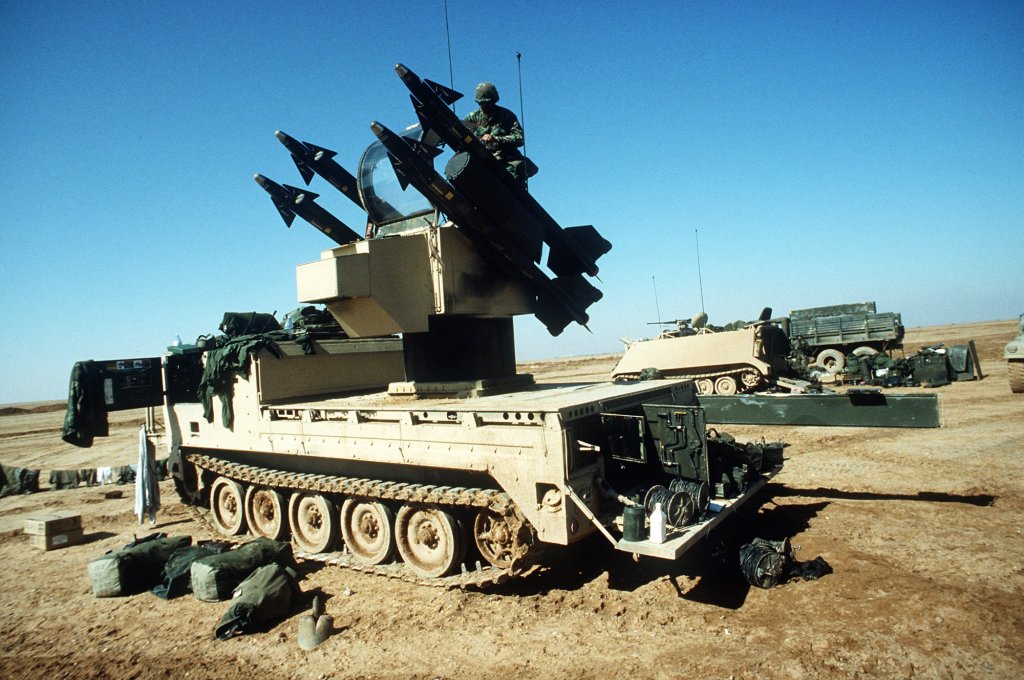
A truck-based SHORADS solution separate from the FrankenSAM program, but very similar to it, has also appeared in Ukraine, in the form of a ground-launched version of the AIM-132 ASRAAM mounted on a 6×6 Supacat all-terrain truck chassis, with a twin-rail launcher for a pair of the missiles mounted at the rear.

With all this in mind, SASC calls for the U.S. Secretary of Defense to provide a briefing to the congressional defense committees, no later than March 31, 2025, that will look into U.S. Air Force use of the FrankenSAM, or at least the overarching concept behind it.
In particular, the U.S. Secretary of Defense is tasked to look at how DOD and partner countries have utilized the FrankenSAM system in contingency operations (this presumably refers to Ukraine specifically, since, as far as we know, no other countries have used it), any additional resources that may be required to expand and improve the FrankenSAM system, and how the U.S. military could exploit the capability for quick reaction or extended use in other theaters.
It’s no secret that the U.S. military in general has a SHORADS deficit. This is something that TWZ has highlighted for years now. At the same time, it should be recalled that limited numbers of ground-based air defenses also extend to the supplies of longer-range systems like the Patriot, and there is no mid-tier system fielded by the U.S. military in significant numbers.
The realities of future conflicts likely being fought in non-permissive aerial environments have forced a shift in thinking and with SHORADS being needed sooner rather than later, a semi-off-the-shelf solution like one of the FrankenSAM systems is obviously of interest.
The fact that the FrankenSAM is being specifically suggested for the defense of U.S. Air Force airfields is also notable. The vulnerability of air bases is something we have also discussed at length over recent years.
Simply put, the Air Force will likely have to fight future wars that will be heavily expeditionary in nature, forcing assets to operate far from home, and in contested environments. America’s once significant air superiority margin has gradually shrunk, meaning that available airbases will increasingly be threatened by airstrikes, as well as by missiles and drones of various kinds.

The kinds of threats that might be employed by China, for example, against an airfield used by the U.S. Air Force in the Pacific will be complex and varied. The ability to protect against cruise missiles and drones that might have penetrated the outer layers of the air defenses and directly threaten the air base and the critical assets that it hosts could well make the difference between victory and defeat. Very small units that are far forward deployed in less conspicuous areas and those farther back will also need some form of protection against lower-volume aerial threats.
Threats directed against airfields might also not necessarily be particularly high-end in terms of their capabilities. The war in Ukraine has provided ample evidence of how relatively unsophisticated drones can disrupt the operations at an air base, even if it’s hundreds of miles beyond the front line. A SHORADS like the Sidewinder-based FrankenSAM, however, might well be enough to defend against these kinds of attacks, albeit only limited ones, and to do so at an acceptable financial cost.
While drone threats and cruise missiles could also be tackled by crewed fighters, the reality of almost any kind of future large-scale conflict is that every warplane will likely be needed elsewhere, very likely also operating at significant distances from their bases. This makes it all the more important that airfields are defended by organic SHORADS.
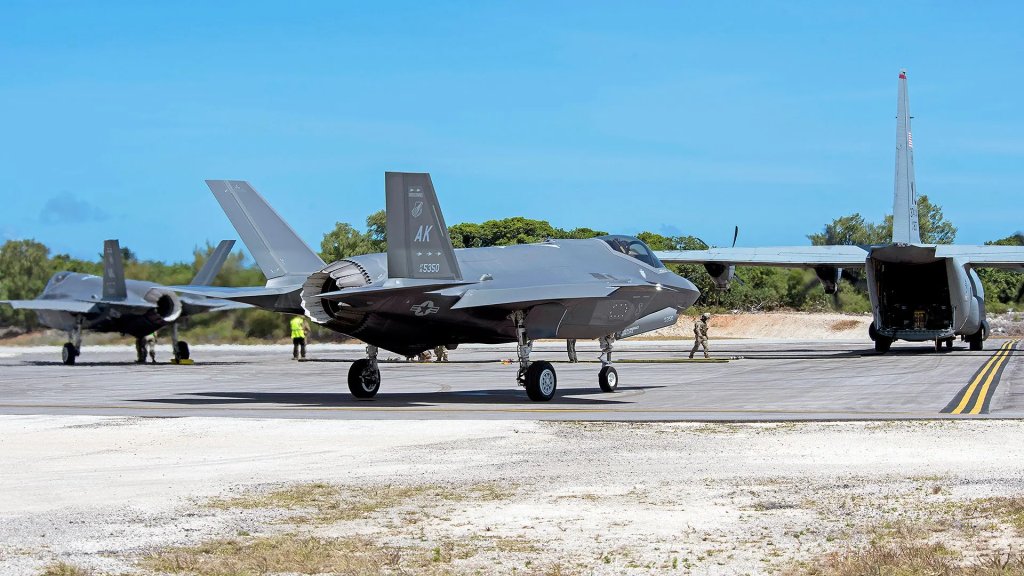
In fact, the idea of a more capable new-generation SHORADS armed with Sidewinder air-to-air missiles is not new for the U.S. military.
In the past, Boeing has demonstrated at least two different weapons turrets for the existing Avenger air defense system that add the AIM-9X Sidewinder air-to-air missile. In its original form, the Avenger is based on a Humvee armed with FIM-92 Stinger missiles and a 50-caliber machine gun. Adding AIM-9X gives the system a much greater reach, a more reliable seeker system, and a better ability to engage maneuvering targets.

The aforementioned AIM-9M doesn’t offer the same level of capability as the AIM-9X, but it’s available in large numbers, has already been integrated in at least one iteration of the FrankenSAM, and as such would appear to offer a readymade SHORADS solution, especially for the point defense of air bases and other critical infrastructure.
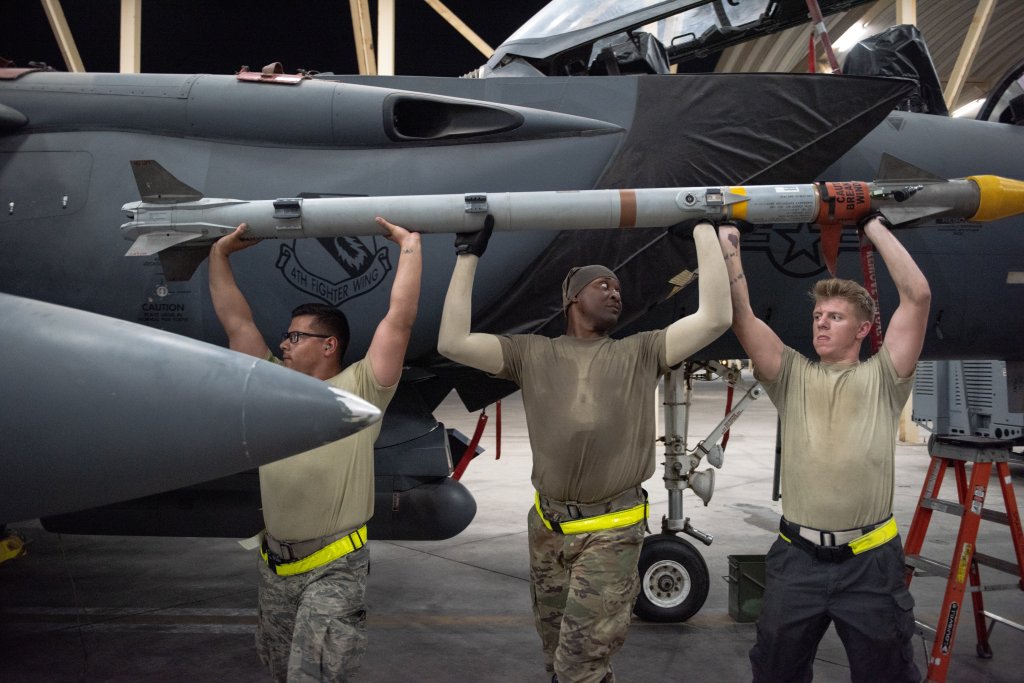
Intriguingly, the U.S. has supplied AIM-9X missiles to Ukraine as well, although it is not entirely clear if they are being used as part of the FrankenSAM initiative or if they are fired by the National Advanced Surface-to-Air Missile System (NASAMS) that Ukraine also operates. Reports that the Ukrainian NASAMS are firing AIM-9X as well as AIM-120 AMRAAM missiles are something that TWZ has addressed in the past.
The AIM-9M — provided that is the missile used, and there are certainly other options, too — would also be a much less expensive alternative than many of the missiles and interceptors used by higher-end SHORADS. What’s more, stocks of AIM-9Ms (and other Sidewinder variants) can be easily sourced from U.S. stocks and those of allies.

Either way, aside from the FrankenSAM, there is a precedent for using the Sidewinder missile in a ground-launched form. Between the 1960s and the 1990s, the U.S. Army fielded such a system, called the Chaparral. This consisted of a turreted four-round launcher mounted on either a tracked vehicle based on the M113 armored personnel carrier or a trailer. Chaparral used derivatives of the AIM-9 Sidewinder known as MIM-72s.
Chaparral was exported to a number of countries during the Cold War and remains in limited service today, including in ground-based and navalized forms in Taiwan.
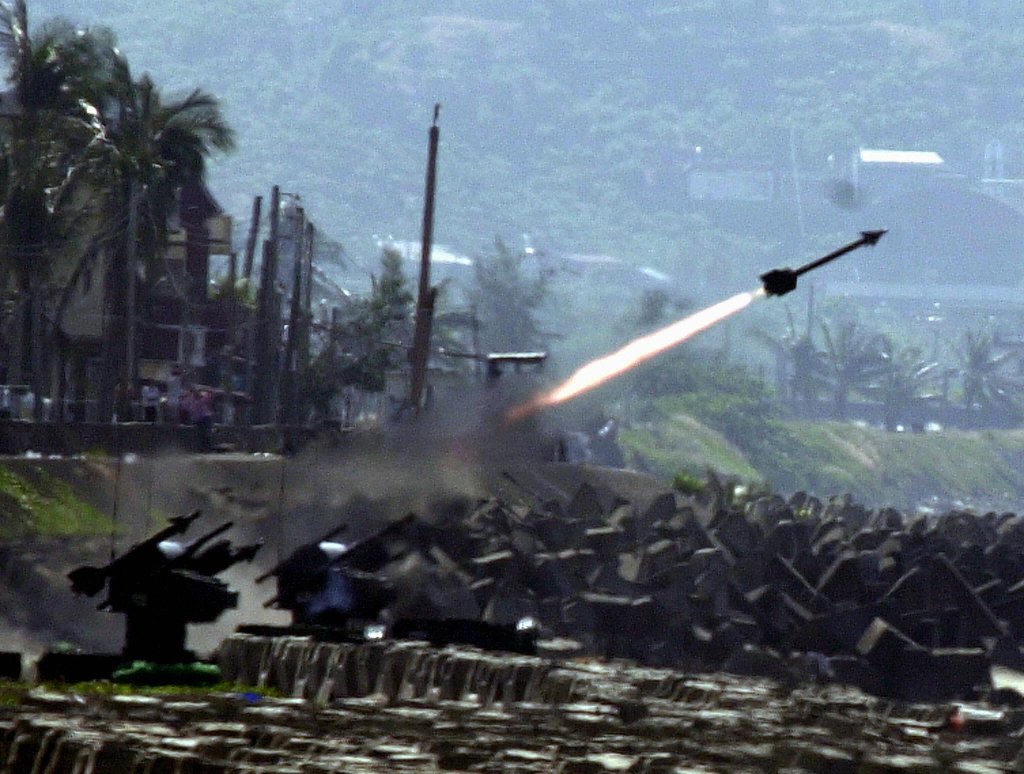
Ultimately, the same kinds of threats that the FrankenSAM is helping protect Ukraine against — low-flying fighter aircraft, helicopters, cruise missiles, and drones — are the same kinds that the U.S. Air Force would likely have to defend its air bases against, especially in a future conflict in the Pacific theater. Here, the air defense problems will be compounded by China’s expanding anti-access and area denial capabilities as well as the very practical limits on America’s ability to guarantee air superiority over such a vast area.
While the U.S. military has, in recent years, made efforts to address its SHORADS deficiencies, if predictions are correct, then time may be fast running out to procure and field such systems before the U.S. Air Force is involved in a potential conflict with China in the Pacific. It’s this kind of urgency that may well have driven official U.S. interest in the FrankenSAM system.
At the same time, there is a very real need for air defense of air bases outside the Pacific theater, with installations in the continental United States also being potentially vulnerable, including to drone attacks. The growing need for defenses against lower levels of threats at air bases in the United States, as well as around critical infrastructure, and elsewhere overseas could well be met by a lower-end SHORADS solution of this kind.
It might yet be the case that a system developed under a crash program to provide a rapid and inexpensive air defense solution for Ukraine ends up providing critical short-range air defense capabilities for the U.S. Air Force, and potentially other operators too.
Contact the author: thomas@thewarzone.com
